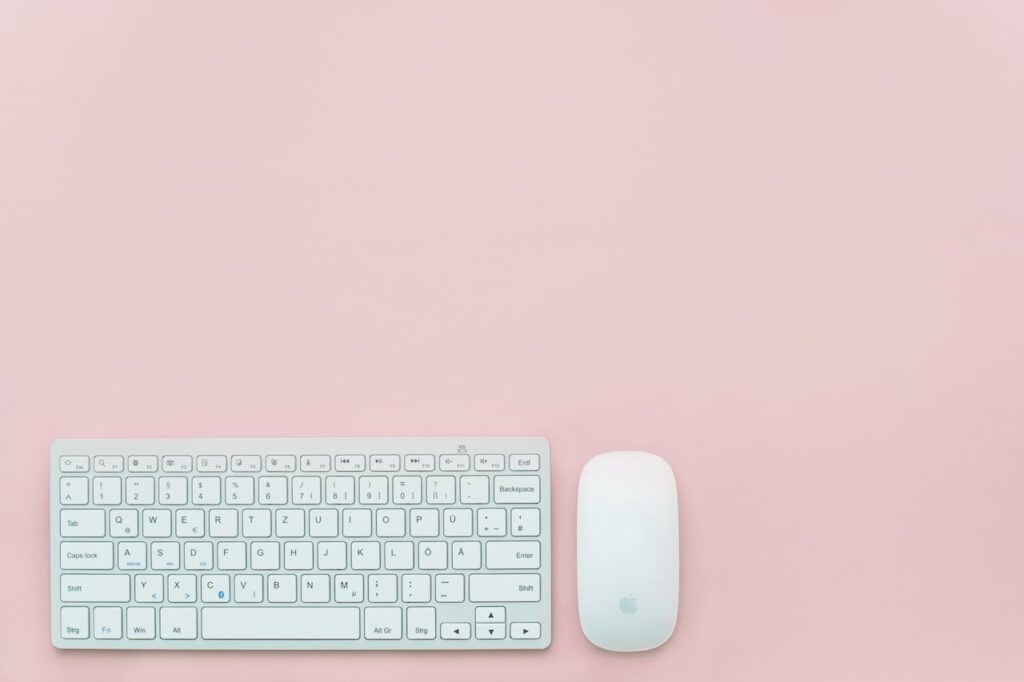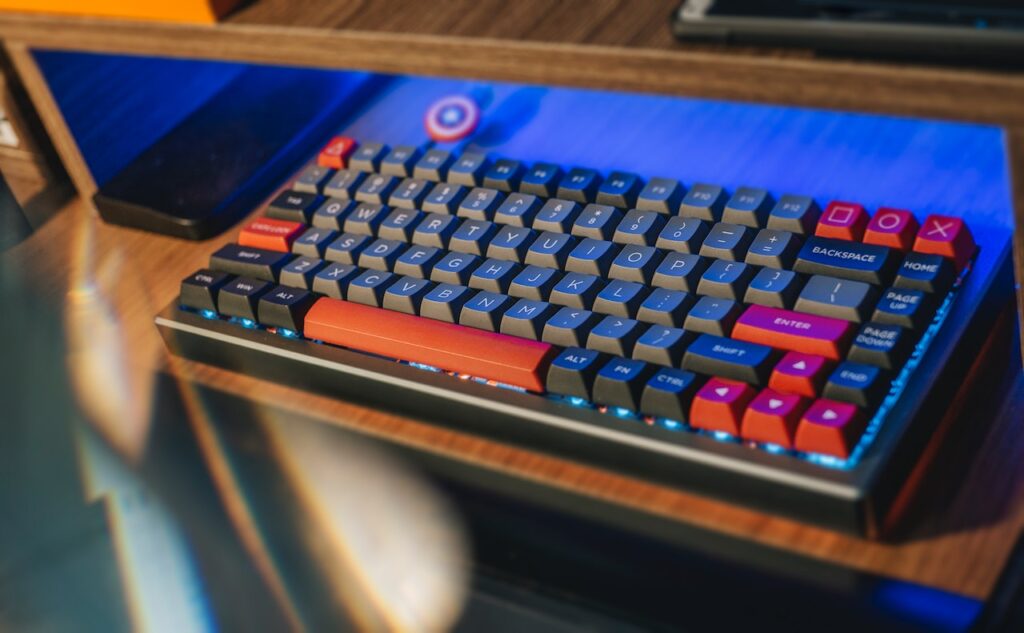Have you ever felt tired when gaming intensively or felt the need to lay down for a while to reduce back pain? Or worse, did you ever get your fingers get cramped due to gaming even for a short while? Such symptoms show that you’re not placing your keyboard and mouse in the correct position. In other words, the ergonomics of your PC gaming activity are not good.
Table of Contents
Proper keyboard and mouse positioning can improve your gaming performance, prevent physical strain/ injuries, and enhance your overall gaming experience. In this article, we discuss seven practical tips to optimize your gaming ergonomics. These tips will help you achieve the best gaming posture and performance possible in almost all situations.
Understanding Ergonomics of Gaming
Ergonomics includes designing and arranging materials to fit the human body and its movements. Good ergonomics can help you prevent musculoskeletal disorders (MSDs). This commonly includes carpal tunnel syndrome, neck pain, back pain, and eye strain resulting from prolonged or improper use of keyboards, mice, and the computer.
To apply ergonomic principles to your keyboard and mouse positioning, you need to consider three main factors:
-
- your body posture,
- your desk height,
- and your chair height.
Your body posture should be relaxed and natural, with your head, neck, shoulders, arms, wrists, and hands aligned in a straight line. The desk height should be adjusted so that your elbows are at a 90-degree angle or slightly lower when using your keyboard and mouse. Adjust the gaming chair so that your feet are flat on the floor or on a footrest, and your knees are at a 90-degree angle or slightly lower than your hips.
Keyboard Positioning
Your keyboard should be placed directly in front of you, about two to three inches above your knees. Ensure you reach all the keys comfortably without stretching or bending your wrists.
If you use a standard keyboard with a numeric keypad, you may want to move it slightly to the right to center the most-used alphabet keys with your body.
If you use a gaming keyboard with function keys or extra buttons, you may want to move it slightly to the right to access them easily.
You should also adjust the keyboard height and angle for comfort and performance. Most keyboards have retractable feet or legs that allow you to change the tilt of the keyboard.
Experiment with different angles to find what works best for you. Some gamers prefer a flat keyboard for better wrist alignment, while others prefer a tilted keyboard for better finger reach. You can also use a wrist rest or a towel to support your wrists and prevent them from dropping below the keyboard level.
Mouse Positioning
Your mouse should be placed next to your keyboard, at the same height and angle. It should be directly in front of your shoulder or slightly off-center at most. You should not have to reach very far to grab the mouse or move it across the desk. You should be able to move the mouse smoothly and accurately with minimal wrist movement.
You should also adjust the mouse sensitivity and position for accuracy and speed. You can adjust the mouse sensitivity in your operating system settings or in your game settings. Find a balance between high sensitivity for fast movements and low sensitivity for precise movements. You can also use a gaming mouse with adjustable DPI (dots per inch) settings that allow you to switch between different sensitivities on the fly.

You should also use a mouse pad or a smooth surface that provides enough friction and traction for your mouse. A good mouse pad can improve your mouse control, accuracy, and speed by reducing skipping, jittering, or lagging. Choose a mouse pad that suits your gaming style and preference. Some gamers prefer a hard mouse pad for faster movements, while others prefer a soft mouse pad for more comfort.
Hand Placement
Your hand placement can also impact your gaming performance by affecting your speed and precision. You should position your hands on the keyboard and mouse in a way that allows you to access all the keys and buttons comfortably and efficiently.
For keyboard hand placement, there are two main methods: WASD (or ESDF) method and the arrow keys method. The WASD (or ESDF) method is more popular among gamers as it allows you to use more keys around the left side of the keyboard for various functions such as movement, jumping, crouching, reloading, etc. The arrow keys method is less common among gamers as it limits your access to other keys on the keyboard.

For mouse placement, ensure that your forearm rests don’t come into contact with the table underneath the mouse a lot. If that happens, your arm will repeatedly come into contact with the table resulting in injuries that may become devastating in the long run.
Monitor Placement
Your monitor placement can also affect your keyboard and mouse positioning by influencing your viewing angle, distance, and comfort. Your monitor should be placed directly in front of you, about an arm’s length away. The top edge of the monitor should be at your eye level or slightly lower. Ensure you don’t have to turn your head or look up or down to see the whole screen.
You should also adjust the monitor’s tilt and brightness for comfort and performance. Most monitors have adjustable stands or mounts that allow you to change the screen tilt. You should experiment with different angles to find what works best for you. Some gamers prefer a flat monitor for better visibility, while others prefer a slightly tilted monitor for better posture. You should also adjust the brightness and contrast of your monitor according to the ambient lighting and your personal preference. You should avoid using a monitor that is too bright or dim, as it can cause eye strain and headaches.
Apart from the positioning of monitors, their technology and various other factors also effect your eye health. To know more about how gaming monitors help in this regard, we encourage you to read this post about how gaming monitors differ from your regular monitors.
Standing Desk Considerations
You may need additional adjustments to your keyboard and mouse positioning if you use a standing desk for gaming. A standing desk can offer some benefits for gaming, such as improving your blood circulation, posture, energy, and focus. However, a standing desk can also pose some challenges for gaming, such as increasing your fatigue, discomfort, and risk of injury.
-
- To use a standing desk for gaming effectively, you should follow these tips:
- Use an anti-fatigue mat or a cushioned floor to reduce the pressure on your feet and legs.
- Wear comfortable shoes that support your arches and ankles.
- Alternate between standing and sitting every 20 to 30 minutes to avoid stiffness and soreness.
- Adjust the height of your standing desk so that your elbows are at a 90-degree angle or slightly lower when using your keyboard and mouse.
- Adjust the height of your monitor so that the top edge is at your eye level or slightly lower when standing.
- Keep your head, neck, shoulders, arms, wrists, and hands aligned in a straight line when using your keyboard and mouse.
- Maintain a comfortable distance between your eyes and your monitor when standing.
Tips for Healthy Keyboard and Mouse Usage
Besides positioning your keyboard and mouse correctly for gaming, you should also follow some general tips for healthy keyboard and mouse usage. These tips can help you prevent or reduce common problems associated with keyboard and mouse usage, such as eye strain, wrist pain, finger fatigue, and carpal tunnel syndrome.
Here are some tips for healthy keyboard and mouse usage:
- Take frequent breaks from gaming to rest your eyes, stretch your muscles, and hydrate yourself.
- Use proper typing techniques to avoid hitting the keys too hard or too fast.
- Use proper clicking techniques to avoid pressing the mouse buttons too hard or too often.
- Use keyboard shortcuts or macros to reduce repetitive movements and keystrokes.
- Use ergonomic accessories such as wrist rests, mouse pads, keyboards, mice, chairs, etc. to improve your comfort and performance.
- Consult a doctor or a physical therapist if you experience any persistent or severe pain or discomfort from keyboard and mouse usage.
Final Thoughts
Keyboard and mouse positioning is an important aspect of gaming that can affect your comfort, health, and performance. By following these seven tips, you can optimize your keyboard and mouse positioning for gaming and enjoy a better gaming experience.
Remember that proper ergonomics is not only good for gaming but also for your long-term health and well-being. So don’t neglect your keyboard and mouse positioning and adjust them according to your needs and preferences.
We hope you found this article helpful and informative. If you have any questions or feedback, please feel free to leave a comment below. Happy gaming!

